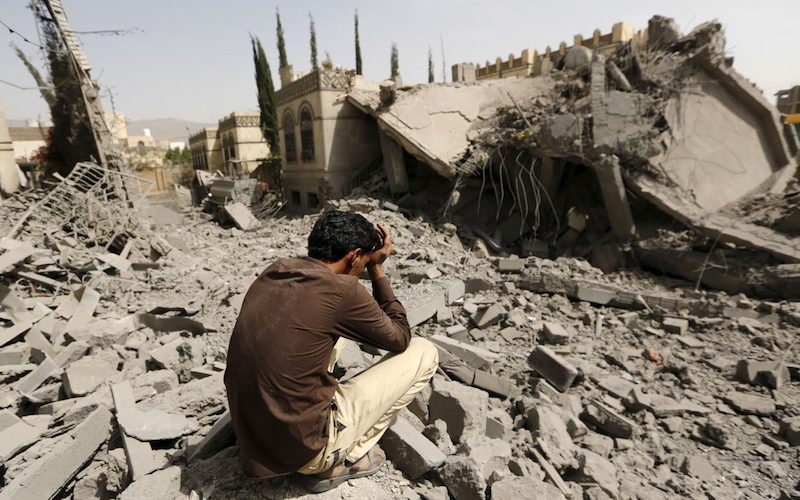
Sustainable Stability in the Middle East: A Governance Structure Built on Civil Society
In this time of international, national and interpersonal conflicts where bombast and vagaries are the norm, we need specific, actionable solutions for global problems. We suggest that sustainable stability in the Middle East is possible through a process that calls on regional integration through a governance structure crafted primarily by civil society, i.e., the private sector, professional societies, academics and NGOs, not by national governments. Our proposed governance structure is built on commonalities, on the universal concepts and principles of fairness and the benefits to society through progress in science, technology, medicine, education and the arts.
We recognize that regional development initiatives of this type have been attempted before, for example the Gulf Cooperation Council, the Arab League, and the Organization of Islamic Cooperation (OIC). All of these, however, have their respective shortcomings. The Arab League, for example, includes many of the same members and similar long-term objectives as our model but divisions between the member states remain an issue. Tensions from the Cold War era, when certain states were U.S. allies and others were Russian allies, persist, while new divisions between monarchies and elected governments have arisen since the Arab Spring. While Israel is not part of these organizations, Egypt, Jordan and Turkey formally recognize the State of Israel in the United Nations. Also, it was widely reported that Israel would open an office in Abu Dhabi for its representatives to the International Renewable Energy Agency and that Qatar will allow the Israeli soccer team to participate in the 2022 World Cup, if they qualify.
To project how this regional integration can be implemented, we examined various academic studies of “why?” and “how?” successful integration happens. Ernst Haas’ theory of Neofunctionalism in his study of European Integration and the European Union highlights the spillover effect where one, or a few, points of initial coordination will create a domino effect, which will lead to other incentives and coordinated programs. Contrary to this, Andrew Moravcsik’s theory of liberal Intergovernmentalism, proposes that Neofunctionalism is too idealistic and doesn’t strongly consider states acting in their own self-interest. We account for this and adjust by suggesting that there is an important difference between these inter-governmental relations and the civil society-based structure we propose here. Amy Hawthorne’s work at the Carnegie Endowment for International Peace over a decade ago outlined the potential but difficult role that support for civil society could play in democratizing the Middle East.
Our governance structure is deliberately apolitical, avoiding legislative gridlock and geopolitical tensions and will allow the various sectors involved to cooperate and develop, free from any historical or contemporary political chasms. Organic growth of partnerships across state lines, will integrate and strengthen civil societies in Israel, Turkey, Jordan, the West Bank, Egypt, UAE, Qatar, Oman and Tunisia from the ground up and where each country contributes extensive experience and strengths, some overlapping others unique. For example, infrastructure and logistical expertise of the UAE that has allowed it to build some of the fastest growing and most cutting edge cities in the world and is rated at 13th in the world on the 2016 World Bank’s Logistics Performance Index could be shared with partners in the region who are rated lower on the same scale.
The entire region would benefit form the shared knowledge of water supply and energy systems given the roles that the Tigris, Euphrates and Jordan Rivers and desalination programs play in this domain. The tech space is ideal for shared development programs with enormous software expertise in Israel and equally enormous content arising in the other countries. The organization is multilateral however agreements would initially be bilateral, ensuring that nobody gets shut out. As the system matures, multilateral agreements will be reached. Representatives from civil society would be responsible for generating and signing agreements that contain specific projects and milestones.
To make this civil society-based approach work, the governance structure would have two components: 1) a deliberative body and 2) a judicial forum. The main function of the deliberative body is to draft regulations that will be specifically tailored to the diverse set of participants’ core competencies and limitations. It will serve as the policy and strategy backbone. The deliberative body will have a rotating leadership cabinet. This cabinet will have representatives from all sectors of society and will have the power to set the policy agenda, break tie votes among the deliberative body, and make real-time decisions.
Establishing customized measurable and, perhaps most importantly, achievable milestones for stakeholders will oftentimes require the deliberative body to assist in matching potentially synergetic public and private partners. The deliberative body will be complemented by a judicial forum also composed of a multidisciplinary group of experts from the public and private sectors. The judicial forum will be empowered to adjudicate disputes and enforce rulings. The jurisdiction of the judicial forum will extend beyond states parties. Its broad reach will allow for individuals, private sector entities, and NGOs to have standing in order to air their concerns. The primary goal of this judicial forum is to establish a transparent and fair system that will hold parties accountable. The structure envisions a two-tiered conflict resolution structure (lower and appellate courts) that will hear disputes and will respond to stakeholder inquiries and issue advisory opinions to assist them as they navigate through ethical, technical, medical, procedural, and nuanced compliance issues, among others. We are often asked where the secretariat for this governance structure should be located. We suggest that it could start its life in The Hague eventually moving to the region including a site in Ramallah in the West Bank.
Peace in the Middle East has long been a metaphor for the unobtainable or for the cynical projection of western capitalism. We have to change the dialogue and move towards sustainable stability between like-minded partners in the region. These partners exist; they exist in the civil societies in these countries. Empower them to move the entire region forward.
This article was originally posted in the International Institute for Counter-Terrorism.

